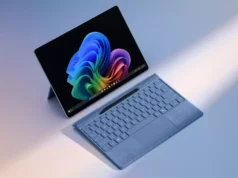The new Pixel 4 XL is supposed to be all that a large screen phone running Android should be like. At least that is what Google believes to be. Samsung though has a different take on a large screen Android phone, something exemplified by its Galaxy Note 10+ device. That sure makes it interesting to find out how the two fares when stacked against each other, which is exactly what is attempted here.
Design
To begin with, the Note 10+ is the outright winner given its sleek and svelte looks that has a touch of futurism to it. None of that with the Pixel 4 Xl which, on the contrary, might look dated, or even out of place altogether. The Google phone might even look inverted given its thickish bezel at the top compared to the minimalist approach at the bottom.
Google justifies the top thick bezel with the placement of front-facing cam as well as sensors to power its new face recognition technology. None of that with the Note 10+ which just has a tiny punch hole on the display for the selfie shooter to peep through.
So, while the Note 10+ may not have the benefit of an efficient face recognition feature, the place of the sensors for the same on the Pixel 4 XL does compromise its looks. Build quality though remains top-notch for both the phone with a common glass back and aluminum frame construction used on both.
Display
Both the phones are designed to appeal to buyers for whom bigger is better. For the Note 10+, that amounts of 6.8-inch of screen real estate while the Pixel 4 XL is the smaller of the two with a 6.3-inch display. Screen resolution though is the same for both, which stands at 1440 x 3040 pixels. That being the same, the Pixel 4 XL has the obvious advantage when it comes to pixel density, which comes to 534 ppi. The Note 10+ meanwhile makes do with a slightly less 498 ppi.
The Note 10+ is also one up on the Pixel 4 XL given its Gorilla Glass 6 protection compared to Gorilla Glass 5 for the Google phone. The Pixel 4 XL again has the upper hand given its support for a 90 Hz refresh rate which leads to less strain on the eyes and better support for gaming applications. For the record, its OLED panel for the Pixel 4 XL compared to Dynamic AMOLED for the Note 10+.
Processor and memory
It is the same story on both sides of the fence. Both the phones come powered by the same Snapdragon 855 chip though Samsung does offer its in-house Exynos 9825 chip in some models, both again being of the 7nm type. Both the phone also benefits from the same Adreno 640 GPU to take care of graphics-rich files.
The Note 10+, however, has the edge when it comes to memory on-board, it being 12 GB for the top of the line model compared to half of it on the best Pixel 4 XL. The Samsung device also has the edge when it comes to native storage available, it being 256 GB compared to 128 GB for the Pixel 4 XL. Plus, the Note 10+ also supports external storage of up to a max of 2 TB while none of that is available on the Pixel 4 XL.
Camera
Again, the Note 10+ prevails over the Pixel 4 XL by a ratio of 2:1, if the number of lenses can be a measure of the picture quality, that is. The Note 10+ comes with a quad-camera setup at the rear, all of which are stacked vertically along the top left corner. In contrast, the Pixel 4 XL comes with a dual-lens camera feature which along with the LED lens are arranged in an iPhone 11 like square placeholder at the top left corner of the phone.
Specifically, for the Note 10+, it’s a combination of 12 mp wide-angle lens, 12 mp telephoto lens having 2x optical zoom and an ultra-wide angle lens of 16 mp resolution. Plus, there is a 3D time-of-flight camera as well placed along the side. For the Pixel 4 XL, it’s a combo of 12.2 mp wide angle lens along with a 16 mp telephoto lens again of 2x optical zoom.
Both the phones take pride in their respective image quality with their predecessors for both models being equally good on this front. The Pixel phones particularly have been known for their exemplary image quality and the new Pixel 4 XL is only expected to add to that.
Towards that, both models have support for high-end tech such as optical image stabilization and phase detection autofocus. Both the phones are also capable of 4K video recording while Note 10+ being HDR compatible as well.
Interestingly, while the Note 10+ boasts of a single lens selfie cam of 10 mp resolution, the Pixel 4 XL comes with a dual lens setup in the form of an 8 mp selfie cam as well as a time-of-flight sensor. The Note 10+ meanwhile comes with autofocus and HDR mode, which unfortunately is missing on the Google device.
Battery
The Note 10+ has the advantage with a bigger 4300 mAh battery while the same for the Pixel 4 XL stands at 3700mAh. Both phones support wireless charging while the Note 10+ has support for reverse charging as well, capable of charging a device placed on its rear surface. Unfortunately, the bigger Pixel does not come with the reverse charging feature.
Other features
A common feature for both the Note 10+ and the Pixel 4 XL is that they both boast of IP68 levels of water and dust proofing. However, a noticeable difference with the Pixel 4 XL is the adoption of a 3D face recognition feature which happens to be the primary mode of user authentication on the Google device. In contrast, the Samsung phone comes with an in-display fingerprint recognition tech and supports the less reliable 2D face recognition technology.
Another unmistakable advantage with the Note 10+ is the stylus support that it comes with. That, in turn, allows for a whole range of added functionalities that the phone supports. So, when it’s about productivity, the Note 10+ surely has the edge over the Pixel 4 XL.
Price
All that the Note 10+ stands for, it comes for a price which again is a higher $1100. The Pixel 4 XL, in contrast, is a lot cheaper at $899. So, for those who’d like to have a big-screen phone that is also supposed to be the best Android phone on the planet, the Pixel 4 XL can be a great option. But if money is not a problem, the Note 10+ is the device to go for.











